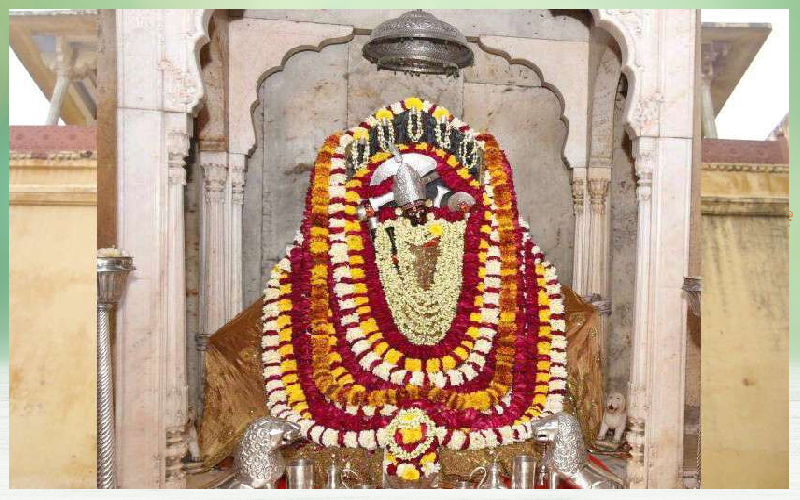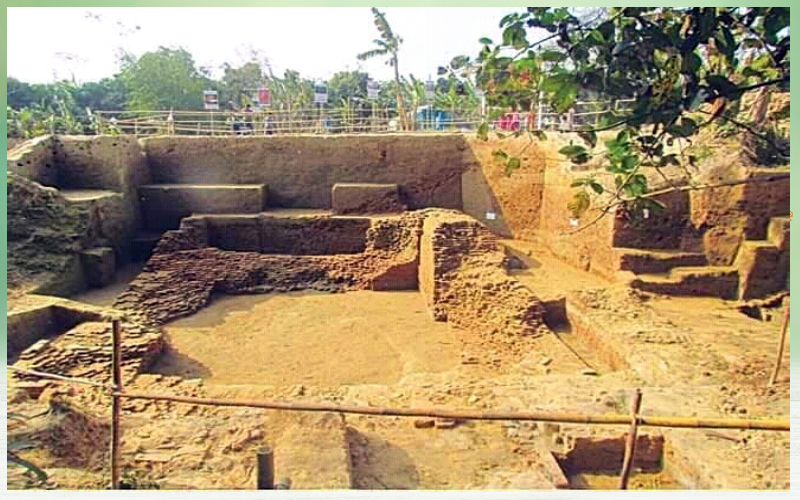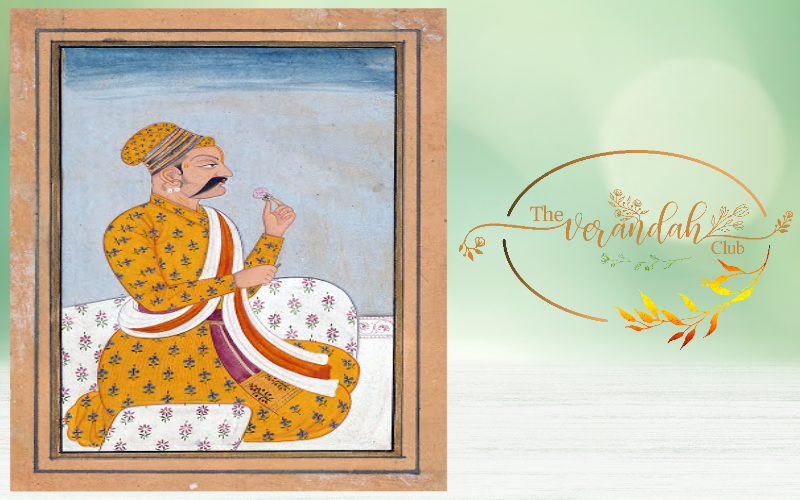A Forgotten King and his deity

12th July 1576, a landmark day in the history of medieval Bengal. At the battle of Rajmahal, Akbar’s Mughal army defeated the forces of Daud Khan Karrani, the last Turkish sultan of Bengal. With this defeat and the subsequent execution of Karrani, the Mughals finally managed to bring the rich Bengal province under their rule. However, the Mughal control over Bengal was irregular and non-linear. This was truer in the eastern part of the land (roughly approximating present day Bangladesh) where a group of powerful landlords – known collectively as Baro Bhuinyas (Twelve Chiefs) – a lose confederate which resisted Mughal rule and maintained their independence. One of the principal members of this confederate was Raja Kedar Ray.
Kedar Ray’s origin could not be definitely traced. From bits and pieces of available information, it could be said that his ancestors probably came from present day Karnataka and settled in the fertile alluvial plains of eastern Bengal. Through his own hard work and military abilities, Kedar Ray became a zamindar (landlord) of the Bikrampur area near Dhaka and joined the confederacy to resist Mughal expansion plans into eastern Bengal. In the 16th century, the riches of Bengal were vied for by many suitors. On the west, Akbar, the new Mughal ruler of Delhi was keen to bring this rich province under his rule. From the seas, the province had to bear devastating attacks by Portuguese pirates. And on the east, the deadly “muggs” from Arakan (present day Rakhine state) were a constant threat.

Kedar Ray was both a brilliant military strategist and a bright political mind. He maintained cordial relations with the other leading lights of the “Baro Bhuinya” especially with Issa Khan, the strongest of the lot and the nominal leader of the confederacy. He raised a strong navy and started sending out for nighttime expeditions to intercept the Portuguese pirate ships and deter them from venturing into the mainland. He also realized that the Portuguese were great sailors and their skill used for self-interest could be a great source of strength. He hired one of the infamous pirates by the name of Carvalho, as a military advisor. This decision would have far reaching consequences.
When the King of Arakan, Salim Shah, sent a huge naval force of 150 ships to attack on Bengal, Raja Kedar’s navy, under the expert supervision of Carvalho, handed them a chastening defeat, capturing 140 of the Arakanese ships. A furious Salim Shah followed this up with a massive force of 1000 ships and was set to inflict a big defeat on Raja Kedar’s navy. However, it was Carvalho and his band of mercenaries who turned the tide of the battle and the Arakanese were finally roundly defeated in what was one of the biggest and bloodiest wars ever fought on water in all of Asia.
But Raja Kedar’s greatest military successes came against the Mughal armies. At Sandwip, an island in Chittagong, Kedar Ray’s army defeated the Mughal forces in the first encounter between the two parties. Desperate to win over Bengal, in 1594, Akbar sent his most trusted and fearsome military general, Raja Man Singh of Amer with the mission to vanquish the “Baro Bhuinyas” and establish Mughal suzerainty over Bengal. On the banks of the Kalindi River, Mughal pride was ground to dust as the mighty Mughal army was defeated by Raja Kedar’s forces. Raja Man Singh was forced to order a retreat because of the worst situation that prevailed. The Mughal forces reassembled to launch another attack. General Kilmaq Khan and his forces linked up with Man Singh who entrusted Kilmaq to lead the charge against Raja Kedar’s forces. The result though was again the same. Raja Kedar’s forces once again emerged victorious and worse, Kilmaq Khan was killed in battle.

Raja Man Singh was enraged by the continuing failure to defeat Kedar Ray. He decided to change his tactics. Unbeknownst to Kedar Ray, Man Singh established a diplomatic pact with Roghunath Singha, the ruler of Sushunga kingdom. With a large reinforcement, Man Singh invaded Shripur, the capital of Kedar Ray. However, the defending forces held firm despite their numerical disadvantage and for a while it seemed a stalemate would ensue. At this point, Roghunath Singha’s forces attacked Kedar Ray and forced the opening up of a second flank, which was exploited by Man Singh.
Although suffering a temporary setback, Raja Kedar refused to bow down completely to Mughal suzerainty. In 1602, when a huge Arakanese Mugg force launched an assault on the Mughal fort at Trimohoni, Kedar Ray joined forces with his onetime enemies to inflict a defeat on the Mughals. Raja Man Singh had enough by then. In 1603, Man Singh’s forces finally defeated and killed Kedar Ray. Kedar Ray’s fall, coming soon after Isa Khan’s death (from natural causes in 1599), almost opened up Bengal for the Mughals. The last resistance from Raja Pratapaditya of Jessore who was also defeated and killed in 1611 – bringing the entirety of Bengal under the rule of the new Mughal emperor, Jehangir.
Incidentally, the kuldevi (cult goddess) of Raja Kedar was Shila Devi, worshipped as a form of goddess Kali. Legend goes that the idol was recovered from the seas and was installed in the royal temple. Apparently, frustrated with the inability to quell Kedar Ray, Man Singh prayed fervently to Goddess Kali for her blessings in achieving success. That night, Man Singh received visions of the goddess who blessed him but asked for a promise to be worshipped in his capital. After the defeat of Kedar Ray, when Man Singh came to see the idol of Shila Devi in the royal temple, he ordered that the idol to be taken to Amer (Jaipur) for worshipping. He also ordered the royal priests to accompany the journey.
Even today, Shila Devi is worshipped in the Amer Fort near Jaipur. The priests are descendants of the original priests who had accompanied Raja Man Singh from distant Bengal. On the sixth day of the winter Navaratras, special prayers are offered to the goddess. Thousands from Jaipur and surrounding areas throng the shrine to seek the mother’s blessings. Hardly anyone of them knows of the valiant king from a distant and exotic land who rose from ordinary beginnings to become a legendary figure. Sadly, history has also forgotten him today.

Based out of Kolkata, Trinanjan is a market researcher by profession with a keen interest in Indian history. Of particular interest to him is the history of Kolkata and the Bengal region. He loves to write about his passion on his blog and also on social media handles.
References:
https://publishing.cdlib.org/ucpressebooks/view?docId=ft067n99v9&chunk.id=ch06&toc.depth=1&toc.id=ch06&brand=ucpress
http://magictoursblog.blogspot.com/2014/03/shila-mata-temple-at-amber-fort.html
https://en.wikipedia.org/wiki/Kedar_Ray
NEXT ARTICLE

At the southernmost tip of this mesmerising ensemble lies the majestic Great Nicobar Island, boasting an impressive landmass of about 910 square kilom...

Bharath has always been a land traversed by spiritual masters/ Guru since time immemorial. These spiritual masters have always upheld the core princip...

South India contains its fair share of unique pilgrimage centres. These divine places of worship have a prominent Sthala Purana, devoted followers, di...